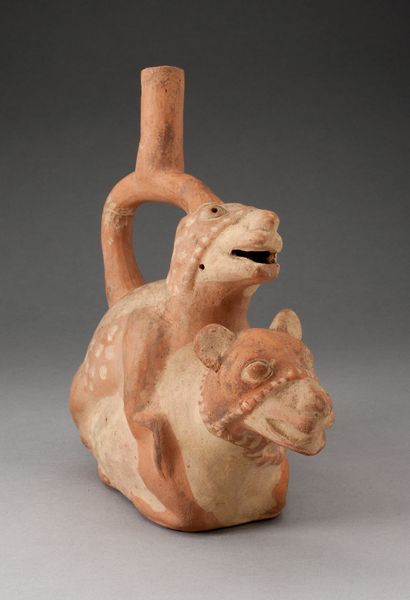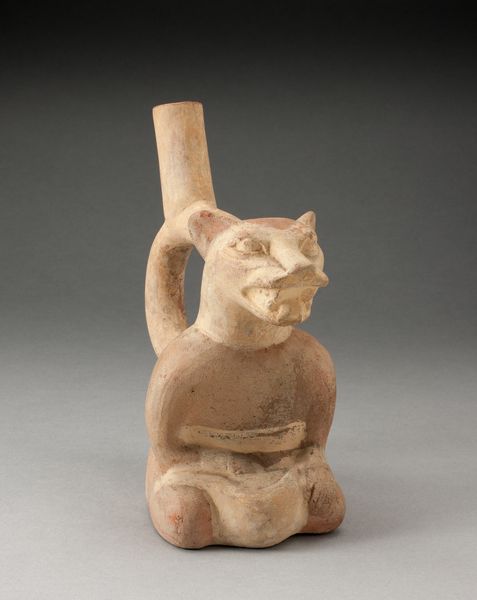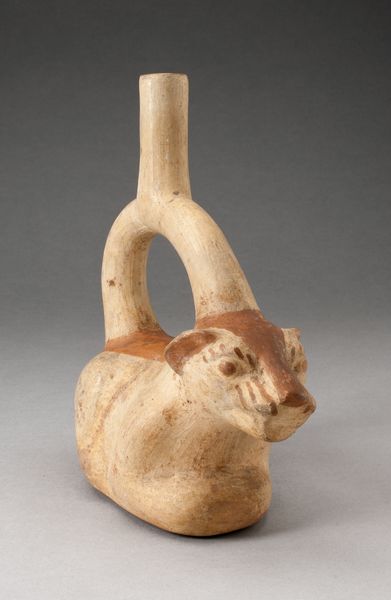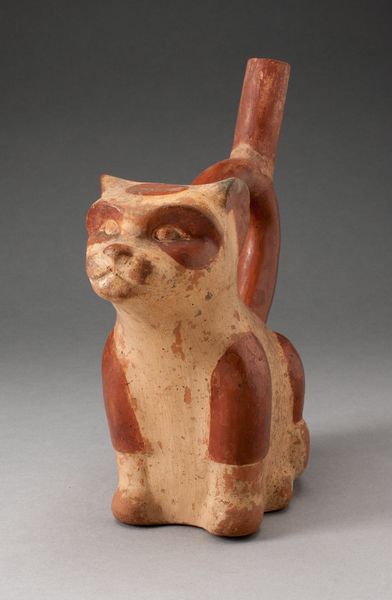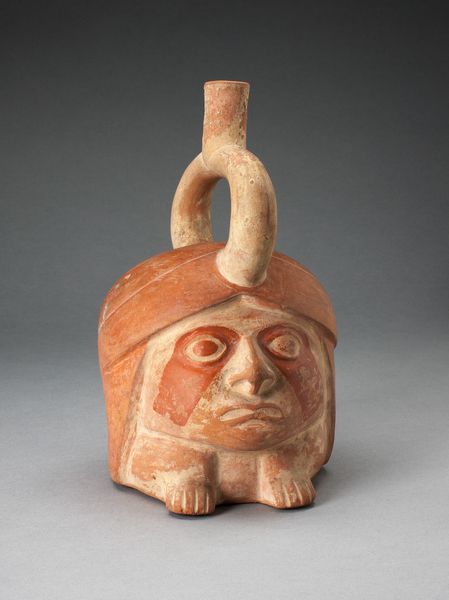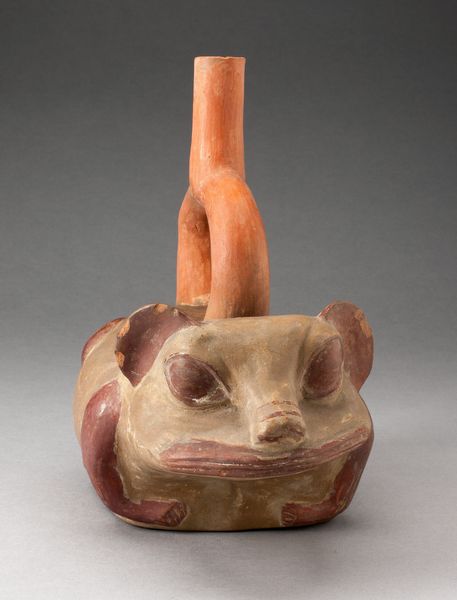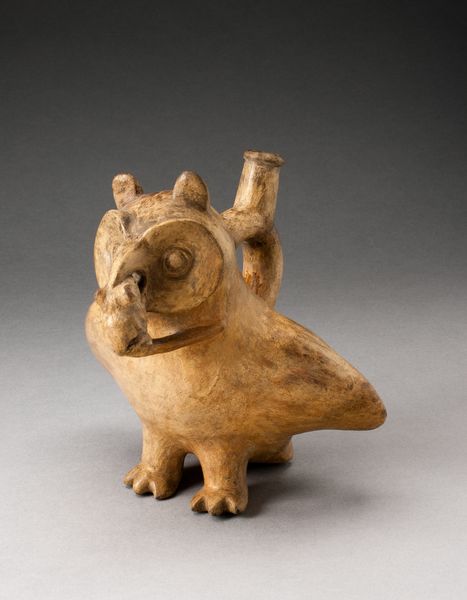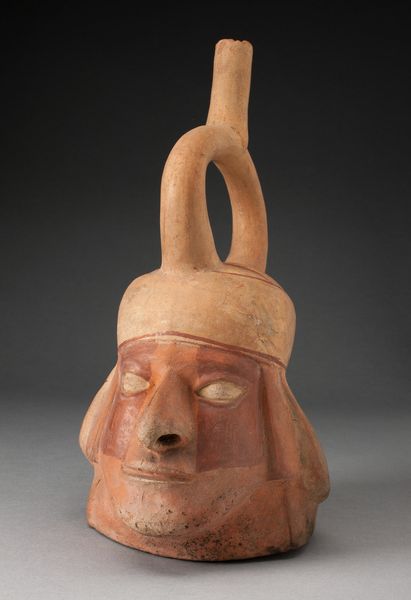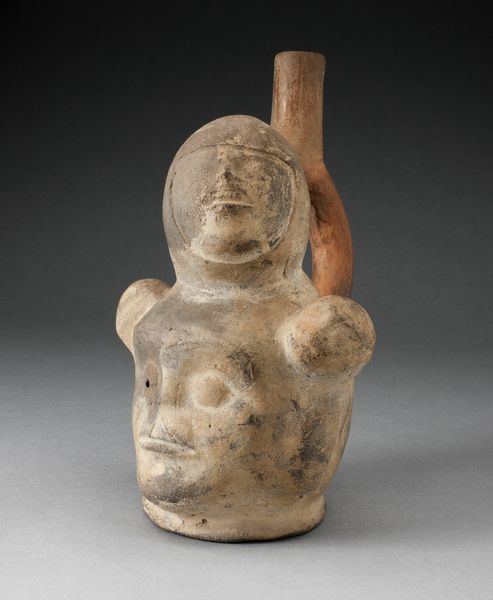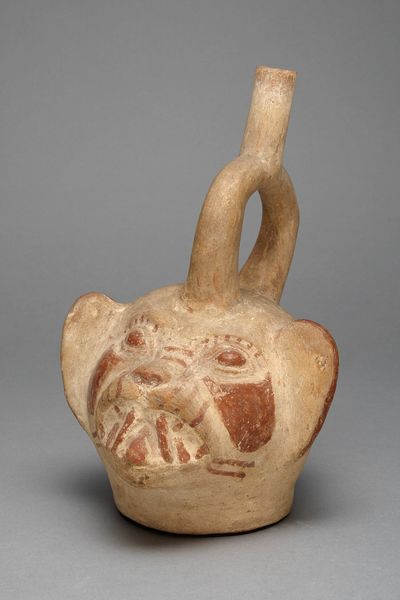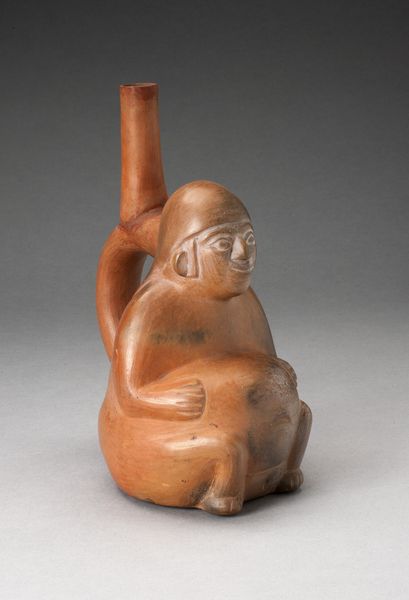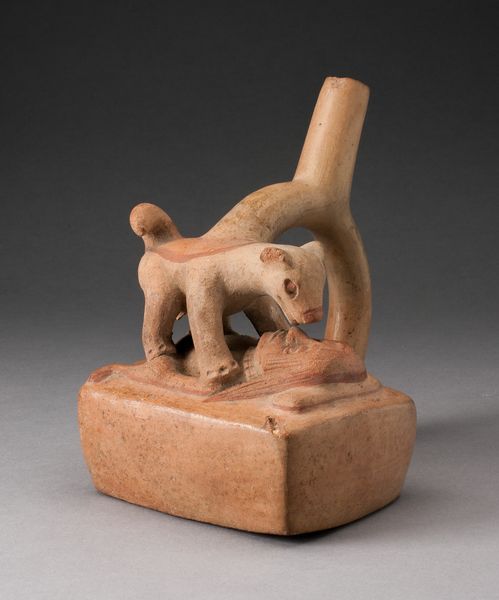
Portrait Vessel of a Ruler with Feline Headdress and Facial Deformities c. 100 - 500
0:00
0:00
ceramic, sculpture, terracotta
#
portrait
#
sculpture
#
ceramic
#
figuration
#
form
#
sculpture
#
terracotta
#
indigenous-americas
Dimensions: H. 27.9 cm (11 in.)
Copyright: Public Domain
Curator: I find myself immediately drawn to the somber stillness emanating from this Moche portrait vessel. It's remarkable. Editor: And quite powerful! I find it fascinating how artists across cultures and eras utilize portraiture to embody power and identity. This ceramic piece, made sometime between 100 and 500 AD, titled "Portrait Vessel of a Ruler with Feline Headdress and Facial Deformities", depicts a ruler from ancient Peru, now part of the collection here at the Art Institute of Chicago. It offers an entry point into Moche culture, politics, and belief systems. Curator: The visible facial 'deformities' that the title calls our attention to cannot be divorced from interpretations around disablism and power. Some believe these attributes indicated divine status, which simultaneously complicates ableist notions of perfection while also creating a stark social hierarchy rooted in physicality. Is this intended to visually communicate an exclusive access to religious insight that sets them apart? Editor: Absolutely. The headdress surmounted by what seems to be a feline—perhaps a jaguar, symbolizing strength and dominion—further underscores that power dynamic. In Moche society, imagery was meticulously crafted to convey specific social messages, which further emphasized a clear socio-political pecking order. It would be amazing to unpack which aspects of daily life and political decisions this ruler was tied to. Curator: Looking at the practical side, one wonders about its function. Was this primarily ceremonial or did it perhaps have utilitarian use? The artistry suggests a significant investment of resources, indicating high status—I mean, we could examine everything from class to gender roles. It really invites these questions. Editor: Definitely. We should be open to all suggestions and be prepared to ask further questions regarding not just artistic inspiration, but its integration within wider social systems and the messages it sends to succeeding generations. In studying material culture from the Moche people we can see their relationship to broader networks of power and the impact of their cultural legacy today. Curator: Exactly. This ceramic object functions not just as a visual representation of an individual, but almost as a concentrated node linking religion, society, and politics. Editor: So well said. By examining its function, the identity of the ruler depicted, we glimpse an insight into how visual and material elements reinforce ideas of authority and legitimacy within a society very far removed from our own.
Comments
No comments
Be the first to comment and join the conversation on the ultimate creative platform.
